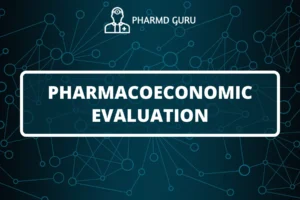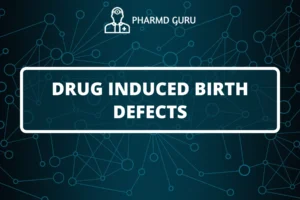Prescription Event Monitoring (PEM) is a specialized pharmacoepidemiological method that plays a crucial role in monitoring the safety of newly marketed medications. It involves the prospective collection and analysis of data on selected medications prescribed in routine clinical practice. PEM provides valuable insights into the real-world use of medications, the occurrence of adverse events, and the overall safety profile. In this article, we will explore the significance of Prescription Event Monitoring, its process, strengths, limitations, and its contribution to enhancing medication safety surveillance.
SCROLL DOWN TO THE BOTTOM OF THIS PAGE FOR ACTUAL NOTES.
TABLE OF CONTENTS:
- Introduction: Importance of Prescription Event Monitoring
- Process of Prescription Event Monitoring
- Selection of Medications
- Data Collection and Analysis
- Strengths of Prescription Event Monitoring
- Limitations of Prescription Event Monitoring
- Contribution to Medication Safety Surveillance
1. Introduction: Importance of Prescription Event Monitoring
Prescription Event Monitoring is a vital tool in pharmacovigilance, particularly for newly marketed medications. It provides an opportunity to monitor the safety of these medications in real-world clinical practice and identify potential adverse events that may not have been observed during pre-marketing clinical trials. By collecting and analyzing data on prescribed medications, PEM contributes to the continuous evaluation and enhancement of medication safety.
2. Process of Prescription Event Monitoring
The process of Prescription Event Monitoring involves several key steps:
- Selection of Medications: Medications are selected for monitoring based on factors such as their novelty, potential risks, indications, and expected patterns of use. These medications are often subject to additional safety monitoring due to limited pre-marketing exposure.
- Data Collection: Healthcare professionals collect data on patients prescribed the selected medications using specially designed monitoring forms. Information such as patient demographics, medical history, concomitant medications, and adverse events is recorded.
- Follow-up: Patients are typically followed up at specific intervals to capture any additional information on adverse events or changes in medication use.
- Data Analysis: The collected data is analyzed to identify potential safety signals, assess the frequency and severity of adverse events, and evaluate any associations between medication use and adverse events.
- Signal Detection and Investigation: Identified safety signals are further investigated using additional pharmacoepidemiological methods, such as case-control studies or cohort studies, to determine causality and understand the risk factors.
3. Selection of Medications
Medications selected for Prescription Event Monitoring are often those with significant uncertainty regarding their safety profiles. This includes newly marketed medications or those with limited pre-marketing exposure. The selection process involves collaboration between regulatory authorities, healthcare professionals, and pharmaceutical companies to identify medications of interest for monitoring.
4. Data Collection and Analysis
Healthcare professionals involved in Prescription Event Monitoring collect data on patients prescribed the selected medications. This includes demographic information, details of the prescribed medication, dosage, duration of use, concomitant medications, and any reported adverse events. The data is collected prospectively, allowing for the capture of events as they occur during routine clinical practice.
Once collected, the data is analyzed to identify potential safety signals, evaluate the frequency and severity of adverse events, and assess any associations between medication use and adverse events. Statistical methods, such as signal detection algorithms and data mining techniques, are applied to detect patterns or trends that require further investigation.
5. Strengths of Prescription Event Monitoring
Prescription Event Monitoring offers several strengths in medication safety surveillance:
- Real-world data: PEM provides valuable insights into the use of medications in routine clinical practice, capturing data from a broad range of patients, healthcare settings, and concomitant medications.
- Early detection of adverse events: By monitoring newly marketed medications, PEM enables the early detection of adverse events that may not have been identified during pre-marketing clinical trials.
- Longitudinal follow-up: The follow-up process in PEM allows for the collection of data over an extended period, providing a comprehensive understanding of medication safety profiles and the occurrence of adverse events over time.
6. Limitations of Prescription Event Monitoring
Despite its strengths, Prescription Event Monitoring has certain limitations:
- Selection bias: The selection of medications for monitoring may introduce bias, as medications with known safety concerns are more likely to be selected. This can affect the generalizability of the findings.
- Underreporting: Similar to other pharmacovigilance methods, underreporting of adverse events is a challenge in Prescription Event Monitoring. Not all adverse events may be reported, leading to an incomplete picture of medication safety.
- Lack of control group: PEM lacks a control group for comparison, making it challenging to establish causality or determine the true incidence of adverse events.
7. Contribution to Medication Safety Surveillance
Prescription Event Monitoring contributes significantly to medication safety surveillance:
- Early detection of safety signals: PEM facilitates the early detection of potential safety signals associated with newly marketed medications, allowing for timely investigation and appropriate regulatory actions.
- Enhanced risk-benefit assessment: The data collected through Prescription Event Monitoring helps evaluate the overall benefit-risk profile of medications, providing evidence for informed decision-making by healthcare professionals and regulatory authorities.
- Post-marketing evaluation: PEM plays a crucial role in the continuous monitoring of medication safety once drugs are on the market, helping detect emerging risks or changes in the safety profile.
ACTUAL NOTES:




